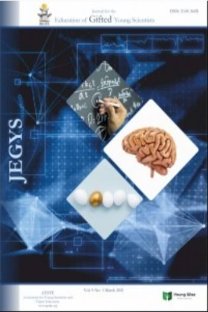Epistemology Philosophy Development of Assessment Instruments Student Chemistry Learning Outcomes
The Eepistemology for the development of an instrument for evaluating chemistry learning outcomes requires that the preparation starts from the basic competence in determining the indicators that will be assessed, through the development of the instrument lattice, which will be exposed in detail about the items of the instrument to be prepared. The role of ontology examines the nature of the reality of the object of knowledge, axiology as a value theory related to the usefulness of knowledge. The phenomenon is that there are still many teachers who have not followed standard procedures in the preparation and development of learning instruments, the teacher does not make a grid as a guide for making questions. As a result, students are lazy to learn because the learning outcomes obtained are not in accordance with the ability level of students. This type of research is the development or research and development (R&D) using the ADDIE model, to develop and design an instrument for evaluating the learning outcomes of class XI science students in chemistry state senior high school (SMA ) 5 Takalar City with a focus on cognitive, affective, and psychomotor dimensions that produce valid and reliable instruments.
___
- Adams, W. K., & Wieman, C. E. (2011). Development and validation of instruments to measure learning of expert‐like thinking. International Journal of Science Education, 33(9), 1289–1312.Bahia, K., & Nantel, J. (2000). A reliable and valid measurement scale for the perceived service quality of banks. International Journal of Bank Marketing, 18(2), 84–91.Erniwati, E. (2018a). No TitleEvaluasi pembelajaran bukanlah kegiatan yang berdiri sendiri, melainkan dibangun oleh empat komponen yang saling terkait dan merupakan suatu kesatuan. Menurut Mansyur dan Suratno (2009) bahwa “kegiatan evaluasi harus (p. 8). p. 8.Erniwati, E. (2018b). Pengembangan Instrumen Penilaian Hasil Belajar Ilmu Pengetahuan Alam Pada Siswa Kelas V Sekolah Dasar Inpres Loka Kabupaten Bantaeng. UNIVERSITAS NEGERI MAKASSAR.Fitrah, M. (2018). Metodologi penelitian: penelitian kualitatif, tindakan kelas & studi kasus. CV Jejak (Jejak Publisher).Fleiss, J. L., & Cohen, J. (1973). The equivalence of weighted kappa and the intraclass correlation coefficient as measures of reliability. Educational and Psychological Measurement, 33(3), 613–619.Hamdi, A. S., & Bahruddin, E. (2015). Metode penelitian kuantitatif aplikasi dalam pendidikan. Deepublish.Jennings, N. R., Sycara, K., & Wooldridge, M. (1998). A roadmap of agent research and development. Autonomous Agents and Multi-Agent Systems, 1(1), 7–38.Kinyua, K., & Okunya, L. O. (2014). Validity and reliability of teacher-made tests: Case study of year 11 physics in Nyahururu District of Kenya. African Educational Research Journal, 2(2), 61–71.Kolstø, S. D., Bungum, B., Arnesen, E., Isnes, A., Kristensen, T., Mathiassen, K., … Ulvik, M. (2006). Science students’ critical examination of scientific information related to socioscientific issues. Science Education, 90(4), 632–655.Mardapi, D. (2004). Penyusunan tes hasil belajar. Yogyakarta: Program Pascasarjana Universitas Negeri Yogyakarta.Mustofa, I. (2016). Jendela Logika dalam Berfikir; Deduksi dan Induksi sebagai Dasar Penalaran Ilmiah. EL-BANAT: Jurnal Pemikiran Dan Pendidikan Islam, 6(2), 1–21.Nurwahida, N., Danial, M., & Mansyur, M. (2018). PENGEMBANGAN PERANGKAT PEMBELAJARAN KIMIABERBASIS DISCOVERY LEARNINGPADA MATERI LARUTAN PENYANGGA DI KELAS XI SMA. UNIVERSITAS NEGERI MAKASSAR.Ruslan, Z. A. (2018). PENGEMBANGAN LKPD KIMIA BERBASIS PEMBELAJARAN ISLAM TERPADU MELALUI MODEL PBL DI SMAIT IBNU SINA MAKASSAR PADA MATERI POKOK LARUTAN ELEKTROLIT DAN NONELEKTROLIT. UNIVERSITAS NEGERI MAKASSAR.Stiggins, R. J. (2002). Assessment crisis: The absence of assessment for learning. Phi Delta Kappan, 83(10), 758–765.Sudijono, A. (1998). Pengantar evaluasi pendidikan. PT RajaGrafindo.Sudjana, N. (1995). Penilaian hasil proses belajar mengajar. PT Remaja Rosdakarya.Supratiknya, A. (2012). Penilaian hasil belajar dengan teknik nontes. Yogyakarta: Universitas Sanata Dharma.Susilana, R., Si, M., & Riyana, C. (2008). Media pembelajaran: hakikat, pengembangan, pemanfaatan, dan penilaian. CV. Wacana Prima.Susongko, P. (2010). No Titlekesahihan memiliki banyak dimensi, dalam kajian ini akan membahas tiga aspek, yaitu kesahihan isi (content validity), kesahihan konstruk (construct validity), dan kesahihan instruksional (instructional validity. Cakrawala: Jurnal Pendidikan, 4(8), 1–7.Tafsir, A., & TAFSIR, A. (2009). Filsafat Ilmu: Mengural Ontologi, Epistemologi dan Aksiologi Pengetahuan. REMAJA ROSDAKARYA.Zaini, M. (2017). Kontrol Nilai Terhadap Sains. SUBSTANTIA, 19(1), 37–52.
- Başlangıç: 2013
- Yayıncı: Genç Bilge Yayıncılık
Sayıdaki Diğer Makaleler
Chanarong WİSETSAT, Prasart NUANGCHALERM
Beatrix Elvi DASİLVA, Tiara Kusuma ARDİYATİ, Suparno SUPARNO, Sukardiyono SUKARDİYONO, Erlin EVELİNE, Tri UTAMİ, Zera Nadiah FERTY
Sri SUMARNİ, Rahmi RAMADHANİ, Yoppy SAZAKİ, Ruri Tria ASTİKA, Windi Dwi ANDİKA, Andika Eko PRASETİYO
Agus SALİM, Punaji SETYOSARİ, Waras KAMDİ, İ Wayan DASNA
Syafrizal SYAFRİZAL, Masrupi MASRUPİ, İstiqomatul MAULUDAH
Van Bien Nguyen, Xayparseut VYLAYCHİT, Anh Thuan NGUYEN
Syamsul HUDA, Rizqi Amaliyakh SHOLİKHAKH, Nuraini Sri BİNA, Fitria LESTARİ, Beni HABİBİ, Putut SUHARSO
Muhamad IMADUDDİN, Anggun ZUHAİDA, Fitria Fatichatul HİDAYAH
